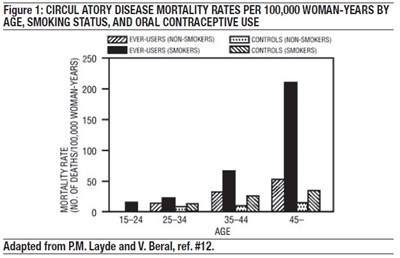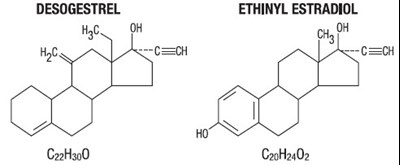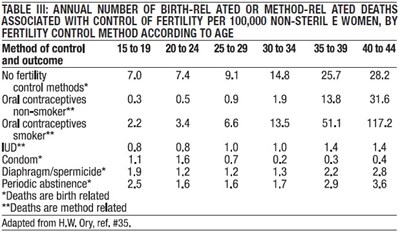Product Images Azurette
View Photos of Packaging, Labels & Appearance
Product Label Images
The following 11 images provide visual information about the product associated with Azurette NDC 75907-091 by Dr. Reddy�s Laboratories Inc., such as packaging, labeling, and the appearance of the drug itself. This resource could be helpful for medical professionals, pharmacists, and patients seeking to verify medication information and ensure they have the correct product.
table2 - Table2
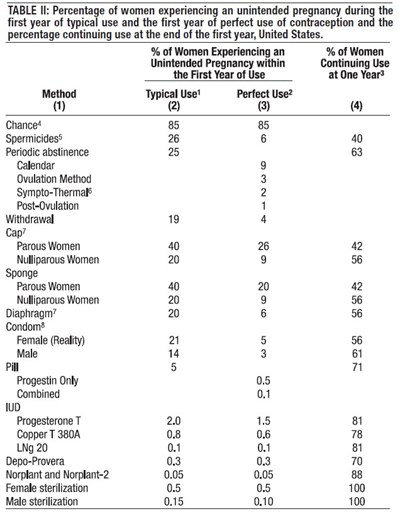
TABLE II: Percentage of women experiencing an unintended pregnancy during the first year of typical use and the first year of perfect use of contraception and the percentage continuing use at the end of the first year, United States. This table provides information on the effectiveness of various contraceptive methods in preventing unintended pregnancies. The percentages represent the likelihood of experiencing unintended pregnancy during the first year of typical use and perfect use of each method, as well as the percentage of women continuing to use the method after one year. Some notable findings include: - Chance: 85% of women using this method experienced unintended pregnancy. - Spermicides: 26% of women experienced unintended pregnancy during typical use, compared to 6% during perfect use. - Periodic abstinence: 25% of women experienced unintended pregnancy. - Calendar method: 9% of women experienced unintended pregnancy. - Ovulation method: 3% of women experienced unintended pregnancy. - Sympto-Thermal: 2% of women experienced unintended pregnancy. - Post-Ovulation: 1% of women experienced unintended pregnancy. - Withdrawal: 19% of women experienced unintended pregnancy during typical use, compared to 4% during perfect use. - Cap (Parous Women): 40% of women experienced unintended pregnancy during typical use, compared to 26% during perfect use. - Cap (Nulliparous Women): 20% of women experienced unintended pregnancy during typical use, compared to 9% during perfect use. - Sponge (Parous Women): 40% of women experienced unintended pregnancy during typical use, compared to 20% during perfect use. - Sponge (Nulliparous Women): 20% of women experienced unintended pregnancy during typical use, compared to 9% during perfect use. - Diaphragm: 20% of women experienced unintended pregnancy during typical use, compared to 6% during perfect use. - Condom (Female/Reality): 21% of women experienced unintended pregnancy during typical use, compared to 5% during perfect use. - Condom (Male): 14% of women experienced unintended pregnancy during typical use, compared to 3% during perfect use. - Pill: The percentages are not provided in the given text. - Progestin Only: 0.5% of women experienced unintended pregnancy. - Combined: 0.1% of women experienced unintended pregnancy. - Other methods like Progesterone T, Copper T 380A, LNg 20, Depo-Provera, Norplant and Norplant-2, female sterilization, and male sterilization have low percentages of unintended pregnancies. Please note that the data in this description is based on the available text and may not be fully accurate. For complete and up-to-date information, it is recommended to consult official sources.*
table4 - table4
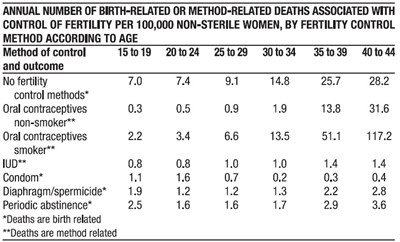
ANNUAL NUMBER OF BIRTH-RELATED OR METHOD-RELATED DEATHS ASSOCIATED WITH CONTROL OF FERTILITY PER 100,000 NON-STERILE WOMEN, BY FERTILITY CONTROL METHOD ACCORDING TO AGE. The table shows the annual number of birth-related or method-related deaths per 100,000 non-sterile women based on different fertility control methods and age groups. The methods include no fertility control, oral contraceptives for non-smokers and smokers, intrauterine device (IUD), condom, diaphragm/spermicide, and periodic abstinence. The numbers vary across age groups and methods, indicating the potential risks associated with each method.*
* The product label images have been analyzed using a combination of traditional computing and machine learning techniques. It should be noted that the descriptions provided may not be entirely accurate as they are experimental in nature. Use the information in this page at your own discretion and risk.
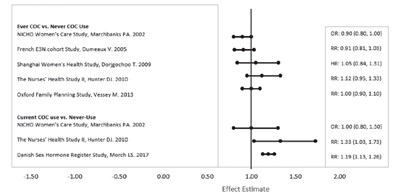
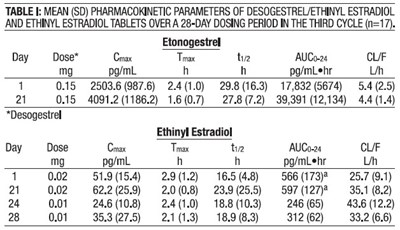
.jpg)
